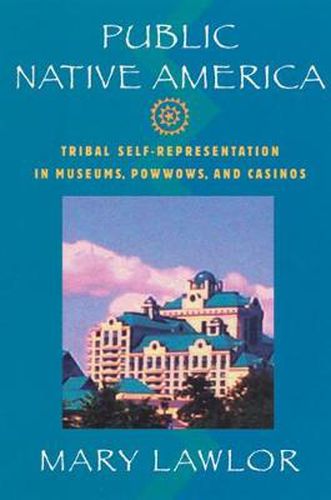Readings Newsletter
Become a Readings Member to make your shopping experience even easier.
Sign in or sign up for free!
You’re not far away from qualifying for FREE standard shipping within Australia
You’ve qualified for FREE standard shipping within Australia
The cart is loading…






Both glamorous and scandalous, the Native American casino and gaming industry has attracted the American public’s attention to life on reservations to an unprecedented degree. At the same time, other tribal public venues, such as museums and powwows, have gained in popularity among non-Native audiences and become sites of education and performance. With the visibility, money, and political access gained through these reservation-owned businesses and cultural centers, individual tribes have taken great strides in redefining their public images to off-reservation audiences. In
Public Native America , Mary Lawlor explores the process of tribal self-definition. Focusing on architectural and interior designs, as well as performance styles, she reveals how a complex and often surprising cultural dynamic is created when Native Americans create lavish displays for the public’s participation and consumption. At first glance, the use of ostentatious and stylized decor, especially in gambling establishments, is puzzling. Is it authentic or does it intentionally play into preconceived notions about tribal life? Drawing on postcolonial and cultural studies, Lawlor argues that these venues serve as a stage where indigenous communities play out delicate negotiations - on one hand retaining traditional beliefs and rituals, while on the other, using what they have learned about U.S. politics, corporate culture, tourism, and public relations to advance their economic positions.
$9.00 standard shipping within Australia
FREE standard shipping within Australia for orders over $100.00
Express & International shipping calculated at checkout
Both glamorous and scandalous, the Native American casino and gaming industry has attracted the American public’s attention to life on reservations to an unprecedented degree. At the same time, other tribal public venues, such as museums and powwows, have gained in popularity among non-Native audiences and become sites of education and performance. With the visibility, money, and political access gained through these reservation-owned businesses and cultural centers, individual tribes have taken great strides in redefining their public images to off-reservation audiences. In
Public Native America , Mary Lawlor explores the process of tribal self-definition. Focusing on architectural and interior designs, as well as performance styles, she reveals how a complex and often surprising cultural dynamic is created when Native Americans create lavish displays for the public’s participation and consumption. At first glance, the use of ostentatious and stylized decor, especially in gambling establishments, is puzzling. Is it authentic or does it intentionally play into preconceived notions about tribal life? Drawing on postcolonial and cultural studies, Lawlor argues that these venues serve as a stage where indigenous communities play out delicate negotiations - on one hand retaining traditional beliefs and rituals, while on the other, using what they have learned about U.S. politics, corporate culture, tourism, and public relations to advance their economic positions.